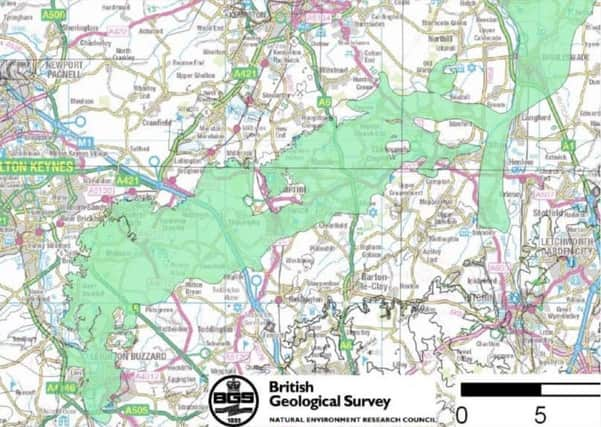Key site for mining sand for fracking identified


The Woburn Sand Formation was identified in a recent report by The British Geological Survey as a key UK location used for quarrying silica sand.
The sand is used for a variety of purposes including glass production, construction, ceramics and foundries. But a potential further use of the sand could be for fracking.
Advertisement
Advertisement
The report states: “If a shale gas industry develops in the UK, frack sand could become a major use of silica sand in the future.”
Sand used in fracking is injected into fissures in the earth at high pressure along with liquid and chemicals, releasing gas trapped within shale rock.
But while the report from the British Geological Survey raises the potential for frac sand from the formation – others are less convinced.
Cllr Ray Berry told the LBO: “One point to note is that Sibelco, as the one-time major operator in and around Leighton Buzzard, has already pulled out completely because the residual sand deposits on their sites had no long-term values.
Advertisement
Advertisement
“So I would question if this process is likely to apply here anyway.”
While silica sand could be used as frac sand elsewhere – it is unlikely any fracking will take place in or around Leighton Buzzard.
Cllr David Bowater said: “Last year when the fracking permissions were being sought I asked the planning officers at CBC if there were likely to be any sites in this locality. I was given a definite no, as fracking is carried out in shale and there are no shale deposits in this area.”
A spokesman for Friends of the Earth, said: “Companies need hundreds of tonnes of sand per well – Cuadrilla used 450 tonnes at Preese Hall – and this has to meet very precise specifications: they can’t just take a digger and a truck to the beach! It appears that the BGS says the area near Leighton Buzzard has the right sort of sand.
Advertisement
Advertisement
“This might mean more excavation / quarrying of sand if the industry gets going, with predictable local impacts, eg truck movements.
“Frac sand is also known to pose occupational health risks of silicosis and lung cancer because the particles are much smaller than those typically found on the beach, and so can penetrate much further into the respiratory system.”
Protest group, Frack-off, is also concerned about the impact on local communities from frac sand quarrying.
It says: “In the US sand mining, transportation and handling has caused significant impacts for communities and workers.
“When silica becomes airborne it can be inhaled by humans and animals permanently damaging the lungs.”